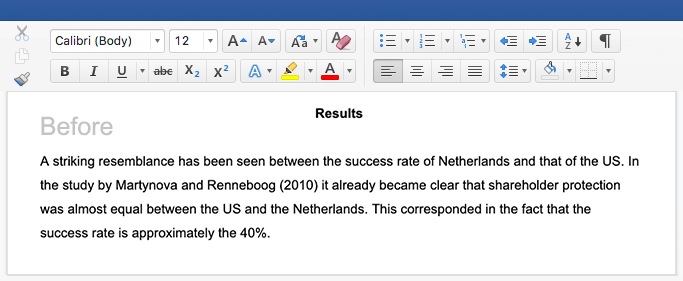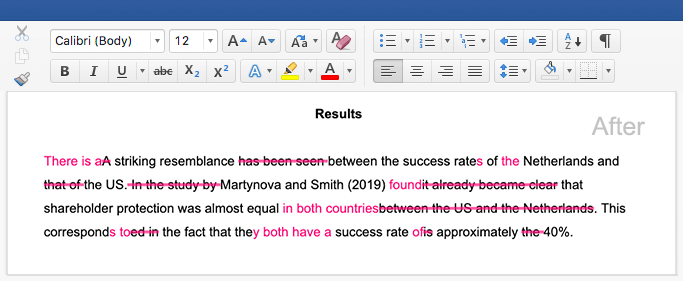How to Write a Thesis or Dissertation Introduction
The introduction is the first section of your thesis or dissertation, appearing right after the table of contents. Your introduction draws your reader in, setting the stage for your research with a clear focus, purpose, and direction.
Your introduction should include:
- Your topic, in context: what does your reader need to know to understand your thesis dissertation?
- Your focus and scope: what specific aspect of the topic will you address?
- The relevance of your research: how does your work fit into existing studies on your topic?
- Your questions and objectives: what does your research aim to find out, and how?
- An overview of your structure: what does each section contribute to the overall aim?
How to start your introduction
Although your introduction kicks off your dissertation, it doesn’t have to be the first thing you write – in fact, it’s often one of the very last parts to be completed (just before your abstract).
It’s a good idea to write a rough draft of your introduction as you begin your research, to help guide you. If you wrote a research proposal, consider using this as a template, as it contains many of the same elements. However, be sure to revise your introduction throughout the writing process, making sure it matches the content of your ensuing sections.
Topic and context
Begin by introducing your research topic and giving any necessary background information. It’s important to contextualise your research and generate interest. Aim to show why your topic is timely or important. You may want to mention a relevant news item, academic debate, or practical problem.
Focus and scope
After a brief introduction to your general area of interest, narrow your focus and define the scope of your research.
You can narrow this down in many ways, such as by:
- Geographical area
- Time period
- Demographics or communities
- Themes or aspects of the topic
Relevance and importance
It’s essential to share your motivation for doing this research, as well as how it relates to existing work on your topic. Further, you should also mention what new insights you expect it will contribute.
Start by giving a brief overview of the current state of research. You should definitely cite the most relevant literature, but remember that you will conduct a more in-depth survey of relevant sources in the literature review section, so there’s no need to go too in-depth in the introduction.
Depending on your field, the importance of your research might focus on its practical application (e.g., in policy or management) or on advancing scholarly understanding of the topic (e.g., by developing theories or adding new empirical data). In many cases, it will do both.
Ultimately, your introduction should explain how your thesis or dissertation:
- Helps solve a practical or theoretical problem
- Addresses a gap in the literature
- Builds on existing research
- Proposes a new understanding of your topic
The increasing prominence of youth climate activism suggests that teenagers are highly aware of the issues at stake. However, it is unclear to what extent they directly engage with government policy in this area. To fully understand the current state of climate politics, it is important to gain a more complete picture of young people’s knowledge and perceptions of domestic climate policy.
Questions and objectives
Perhaps the most important part of your introduction is your questions and objectives, as it sets up the expectations for the rest of your thesis or dissertation. How you formulate your research questions and research objectives will depend on your discipline, topic, and focus, but you should always clearly state the central aim of your research.
If your research aims to test hypotheses, you can formulate them here. Your introduction is also a good place for a conceptual framework that suggests relationships between variables.
- Conduct surveys to collect data on students’ levels of knowledge, understanding, and positive/negative perceptions of government policy.
- Determine whether attitudes to climate policy are associated with variables such as age, gender, region, and social class.
- Conduct interviews to gain qualitative insights into students’ perspectives and actions in relation to climate policy.
Overview of the structure
To help guide your reader, end your introduction with an outline of the structure of the thesis or dissertation to follow. Share a brief summary of each chapter, clearly showing how each contributes to your central aims. However, be careful to keep this overview concise: 1-2 sentences should be enough.
For example, a humanities dissertation might develop an argument thematically, rather than dividing the research into methods/results/discussion. If your structure is unconventional, make it clear how everything fits together.
Thesis introduction example
I. Introduction
Human language consists of a set of vowels and consonants which are combined to form words. During the speech production process, thoughts are converted into spoken utterances to convey a message. The appropriate words and their meanings are selected in the mental lexicon (Dell & Burger, 1997). This pre-verbal message is then grammatically coded, during which a syntactic representation of the utterance is built.
Speech, language, and voice disorders affect the vocal cords, nerves, muscles, and brain structures, which result in a distorted language reception or speech production (Sataloff & Hawkshaw, 2014). The symptoms vary from adding superfluous words and taking pauses to hoarseness of the voice, depending on the type of disorder (Dodd, 2005). However, distortions of the speech may also occur as a result of a disease that seems unrelated to speech, such as multiple sclerosis or chronic obstructive pulmonary disease.
This study aims to determine which acoustic parameters are suitable for the automatic detection of exacerbations in patients suffering from chronic obstructive pulmonary disease (COPD) by investigating which aspects of speech differ between COPD patients and healthy speakers and which aspects differ between COPD patients in exacerbation and stable COPD patients.
Introduction checklist
Checklist: Introduction
0 / 7Well done!
You've written a strong introduction for your thesis or dissertation. Use the other checklists to continue improving your dissertation.
See all other checklists Return to checklistFrequently asked questions about introductions
Cite this Scribbr article
If you want to cite this source, you can copy and paste the citation or click the ‘Cite this Scribbr article’ button to automatically add the citation to our free Reference Generator.
George, T. & McCombes, S. (2024, September 10). How to Write a Thesis or Dissertation Introduction. Scribbr. Retrieved 4 November 2025, from https://www.scribbr.co.uk/thesis-dissertation/introduction/


